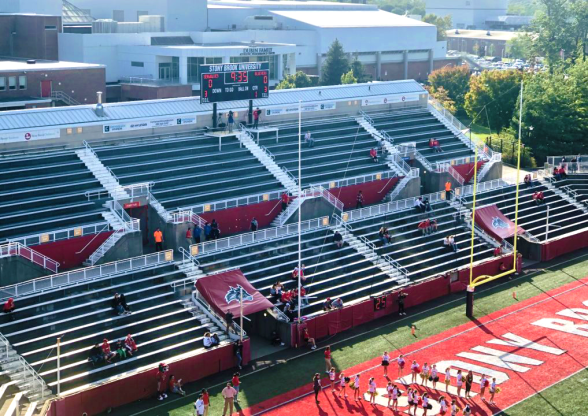
Freshman anthropology major Stephen Attaway and his friends attend almost every home Stony Brook men’s basketball game. They sit near the front of the student section, cheering for every 3-pointer and booing each foul call.
However, among Stony Brook University’s nearly 27,000 students, their dedication to the Seawolves is in the minority.
“A lot of students either don’t know the games are happening or they’re just kind of apathetic towards it,” Attaway said. “People always ask me, I say, ‘Are you going to the game?’ They say ‘Oh, don’t they suck?’ And I’m like, ‘Well, not always.’ There’s not really a passion for our school spirit.”
Attaway’s experience represents a larger trend: most Stony Brook students are not invested in their sports teams. Students and staff alike acknowledge this with a resigned acceptance, and yet no one involved with the University has pinpointed a solution.
Given the number of students enrolled at Stony Brook University and the millions of people in surrounding Nassau and Suffolk counties, it should not be hard to regularly fill Kenneth P. LaValle Stadium’s 12,300 seats for football games and Island Federal Arena’s 4,000 seats for men’s basketball games. Taking that into account, Stony Brook’s attendance numbers have remained under its potential throughout the years.
In October 2021, The Statesman began a series of interviews and data collection to determine the reason for Stony Brook’s athletic apathy. The results show that the school’s athletics department has largely failed to engage its student body with its sports teams.
However, comments from students around the University revealed that high academic pressure and a low percentage of students that live on campus make the issue more prevalent at Stony Brook than at comparable universities.
Apathy among students
The investigation showed that the indifference exists because of a catch-22: students don’t care because their peers don’t care. In a survey conducted over Facebook and Instagram, 94 out of 157 students said they had no emotional investment in Stony Brook’s sports teams. Just 15 described themselves as “very invested.”
“There are some folks who don't engage in sports, and they don't understand sports,” Dean of Students Ric McClendon said in an interview with The Statesman last semester. “So they usually go to either support somebody that they know on the team, or they go because a group of friends are going. How do we make the sporting atmosphere vibrant and exciting, just so you can have a good time?”
The challenge McClendon faces is one that is ingrained into Stony Brook’s culture. In a series of interviews around campus, many students identified their hectic schedules and a general lack of excitement around the sports teams as the reason they do not attend games. A majority of students The Statesman approached on campus immediately responded by saying they would not be suitable candidates for an interview because they knew little about the school’s athletics program.
For some students, the mere existence of a sports program is enough to spur attendance.
Freshman history major Matthew Meidlein said the athletics department did not need to do much to get him to a game.
“I was like ‘Oh shoot, they’ve got a basketball team,’ and that was good enough for me,” Meidlein said. “Then I went to the first game and I was like ‘Oh shoot, this is fun.’ We’re pretty much at every home basketball game, every home football game. We just have tons of fun supporting them.”
But not every student arrived at Stony Brook with Meidlein’s inherent interest in Stony Brook sports. Senior biology major Rosemary Lin is just one of many students who said they feel no emotional connection to the school’s sports teams.
“I feel like other schools don’t need an incentive. People just go,” Lin said. “I feel like everyone here is so focused on academics. We get emails and stuff, but that’s not enough. There’s no hype.”
Even for those who are sports fans, the malaise extends into the bleachers of Island Federal Arena. Anirudh Krishnan, a freshman majoring in biomedical engineering, did not have many positive things to say about his experience attending basketball games.
“I have gone to a bunch of basketball games, but when other people aren’t as emotionally invested you don’t feel so much,” Krishnan said. “Sometimes the vibe is not always there. In my home state in Connecticut … there’s a bunch of people that support the [UConn] Huskies team over there. So there’s a bunch of people that are involved even though it’s very academically heavy over there.”
Sophomore biochemistry major Michael Buffardi echoed Krishnan’s sentiments.
“I feel like there’s usually not a lot of people that go … I feel like it would be a lot more fun,” Buffardi said. “I don’t know if there’s really an incentive for people to go, so if there was, I feel like more people would show up.”
The school’s administration is aware of the problem but has yet to find a definitive solution. Currently, McClendon said he runs an advisory group with student-athletes and uses “in-your-face” communication like social media and posters.
“I’m trying to find [disconnected students] and say ‘Hey, what would bring you into a game?’” McClendon said. “We're trying everything that we can, but if you can't get your peers to return to a game, that's a heavy one. I'm not sure what more we could do. And I also get it — some people just will never be interested in sports. That's OK.”
Campus conditions
The relatively high percentage of commuters at Stony Brook compared to other large state universities in the Northeast creates another challenge in developing a strong athletic culture, but the University has not been able to notably decrease its commuter percentage over the last decade.
Full-time freshmen at schools such as the University of Connecticut (UConn) and the University of Massachusetts (UMass), both large state flagships like Stony Brook, are required to live on campus. No such mandate exists at Stony Brook.
According to the Common Data Set, 82% of Stony Brook freshmen lived on campus pre-pandemic, compared to UMass’ 99% and UConn’s 96%. The pandemic hurt Stony Brook’s numbers as they fell to 73%.
In 2011, 50.3% of Stony Brook undergraduate students lived on campus. By 2019, that number had mildly increased to just 52.4%, but the COVID-19 pandemic undid the minor progress as only 47.5% of students lived on campus this year.
Most students The Statesman approached while interviewing in the commuter lounge in Melville Library could not name any athletes that play for Stony Brook. Junior economics major Matt Wise, who commutes roughly 20 minutes each day, said advertisements for games rarely reach his eyes.
“It is a big school, so I don’t know any of the people on the team. Maybe if I did, I would go support them,” Wise said.
Stony Brook also does not provide on-campus fraternity and sorority housing, which is present at almost every other flagship public university in the region. Whether it be Big Ten powerhouses such as Penn State and Maryland, struggling FBS independents like UConn and UMass or fellow FCS flagships like Delaware, Stony Brook’s Greek life numbers are low in comparison.
A strong fraternity and sorority presence can have an impact on the overall typical campus culture, which in turn could affect the atmosphere around college sports. Currently, the only large tailgate during Stony Brook’s school year occurs during the homecoming game, no matter how many home football games are on the schedule. These tailgates are largely driven by a presence of Greek life. Even then, there are students who tailgate but do not attend the game, and if they do, some will leave at halftime.
Attaway and Meidlein both said that they attended Stony Brook because it was inexpensive, even for Meidlein, an out-of-state student. Campus culture, such as athletics, did not play a role in their decision-making, but they still both found roles as student section regulars. Most other students who settled for Stony Brook cannot say the same.
“It’s hard for people to get behind their school if it wasn’t necessarily the school that was their first choice,” Attaway said.
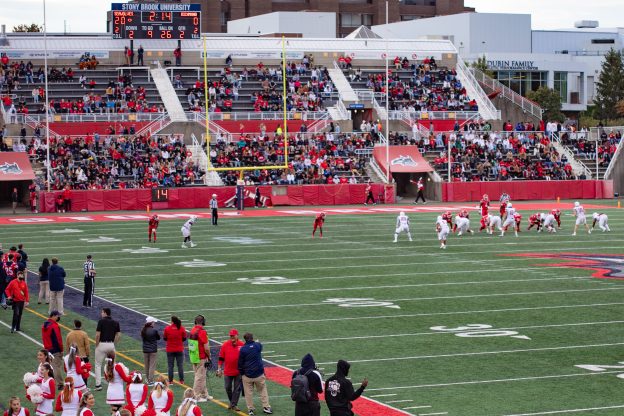
Administrative efforts
The COVID-19 pandemic also had effects on Stony Brook’s athletics program that persists even as life returns to normal. Most students did not live on campus during the 2020-21 school year, and sporting events were played without fans in attendance. Though students can now attend games without restriction, doing so never became habitual to them.
Average attendance at football games dropped from 7,316 in 2019 to 6,777 in 2021. For men’s basketball, attendance fell from 2,676 per game to 2,027. Roadblocks for basketball attendance could include the precariousness of attending indoor events during the pandemic and the inability to make the playoffs after the America East’s postseason ban.
Budget constraints made it infeasible to hire additional staff that could rebuild lost relationships with students. Last semester, Director of Athletics Shawn Heilbron told The Statesman that roughly 20 full-time staff members were let go during the pandemic, several of whom handled fan engagement.
However, according to one former athletics employee who requested anonymity, student engagement was lower right before the pandemic than it was just a few years earlier. They pointed to the early 2010s as an era when the school’s administration placed a higher priority on athletics.
Samuel L. Stanley Jr. was president of the University during that time; he served on the NCAA Division I Board of Directors, earning a nomination after a successful tenure as chairman of the America East Board of Presidents. His performance helped him earn the presidency at Michigan State, the nation’s 21st highest-earning public athletics program and a member of the prestigious Big Ten Conference.
“We had more people. Period,” the employee said. “More boots on the ground, more grassroots. And the relationships on campus on both sides were both invested. You also have to get the program out amongst the student body … and we struggled with that too.”
The Statesman reached out to three other former athletic employees for comment on this article, all of whom declined to speak on the record.
According to Heilbron, President Maurie McInnis expressed concern in August with Stony Brook’s energy on weekends and game attendance numbers. However, the administration did not solve the problem this year given the aforementioned attendance drops.
Curiously, the highest-attended basketball game came long after the ban. The Feb. 26 contest against Albany drew 3,048 fans, over 500 more than any other game. It was the final conference game between two bitter rivals, Senior Night and an opportunity for a randomly selected student to win $20,634 worth of free tuition by making a half-court shot.
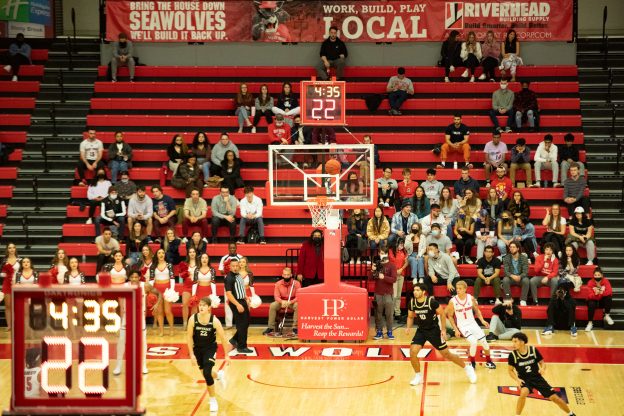
Athletic prestige
Some of the indifference comes from the quality of competition at Stony Brook home games and the school’s perceived lack of athletic prestige.
Stony Brook’s athletics have only been Division I since 1999, winning 44 conference championships since. Among its prominent accomplishments include reaching the College World Series in 2012 and a women’s lacrosse team that is consistently ranked as one of the nation’s best alongside multiple Atlantic Coast Conference (ACC) and Big Ten Conference schools.
Fans have suggested that the weak reputation of the America East Conference, which Stony Brook has played in since 2001, has hurt the Seawolves’ image by association. Four of its eight current schools that will play in the conference next season have never qualified for a single NCAA Tournament in men’s basketball, and Stony Brook is the only school within the country’s top 100 public schools in revenue, according to USA Today. Hartford announced last year that it would downgrade to Division III status by 2025.
“We’re playing NJIT. I couldn’t tell you where NJIT is,” Attaway said. “Hartford’s going DIII next year — how many people are coming out to see a DIII school play? People come out to see good teams play on both sides, so we need better competition and better play. People know schools that are in the CAA. They’re recognizable.”
Stony Brook plays against power conference schools each year in money sports but is always on the road as large underdogs. This year, the football team lost 48-7 at No. 4 Oregon and the men’s basketball team lost 88-59 at No. 3 Kansas. Stony Brook played well in the first half of both games before the more heralded opponents blew it wide open late, but a quick glance at the final box score does not show that.
When given the chance to pull off a massive upset, Stony Brook has not taken advantage of the opportunity all too often. The football team has only beaten one FBS opponent in program history, a 23-3 win over Army in 2012, while the men’s basketball team has only beaten one ranked opponent, No. 13 Washington, in 2014; it has, however, also beaten two Big Ten opponents and one Southeastern Conference (SEC) school. Stunning big-name colleges in revenue sports would sharply boost Stony Brook’s image — just ask Saint Peter’s that — but the Seawolves have yet to pull an upset off on a similar scale.
Attendance statistics show that when Stony Brook is able to play big-name schools at home, the campus responds. The men’s lacrosse game against Syracuse on March 19 drew 3,687 fans even though it was played over spring break, a figure the traditionally more popular men’s basketball team did not reach at any of its games this season.
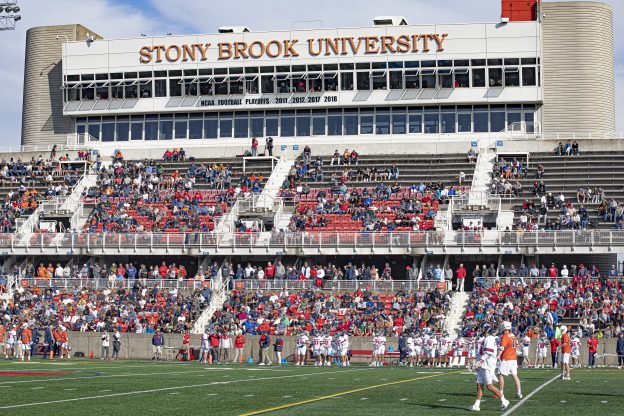
A good portion of those fans, though, were there to root for the Orange. According to Joe Puccio, Sports Director at Syracuse's WJPZ Radio, Syracuse's campus culture creates excitement even for sports not usually seen as money-makers.
"Syracuse fans do a great job of spreading the word about team success," Puccio told the The Statesman in an instant message. "If 'Cuse women's lacrosse is playing well, it’s all over Twitter and the student body responds in waves. It helps that Syracuse is a massive school where people are looking for different things to do, so lacrosse attendance is high because of it. Syracuse Athletics also does a good job of incorporating local businesses. I know for men's lacrosse games in particular, if Syracuse scores around 15 goals, Taco Bell gives out coupons to fans for free food. Simple stuff like that, but with how many people care about Syracuse lacrosse, it brings more people to the [Carrier] Dome."
Such is life at an ACC powerhouse with private school funding, a national fanbase and a history that dates back to over a century before Stony Brook's own founding. New York's mishandling of its state universities has prevented the state from having a public equivalent to Syracuse's athletic image, but only time will tell how much Stony Brook can close the gap between it and household names like the Orange.
“Obviously, I think everyone wants FBS football; everyone wants top 25 basketball,” Attaway said about where Stony Brook’s brand should be in the next 20 years. “March Madness — maybe not every year, but every other year would be neat.”
The competition will improve once Stony Brook joins the Colonial Athletic Association (CAA) next season. In the 2021-22 season, the CAA ranked 14th out of 32 Division I conferences in NET ranking for men’s basketball, an advanced metric that compares the quality of teams across all of Division I. The America East was 26th or seventh-lowest.
However, Stony Brook’s football team has been competing in the CAA since 2013. In football, the CAA still carries the stigma of being in the second-tier FCS rather than the more prestigious FBS. Even with all the progress coming to the school’s athletics program, it’s difficult to ignore the issues that have persisted through past changes.
Mike Anderson contributed reporting.









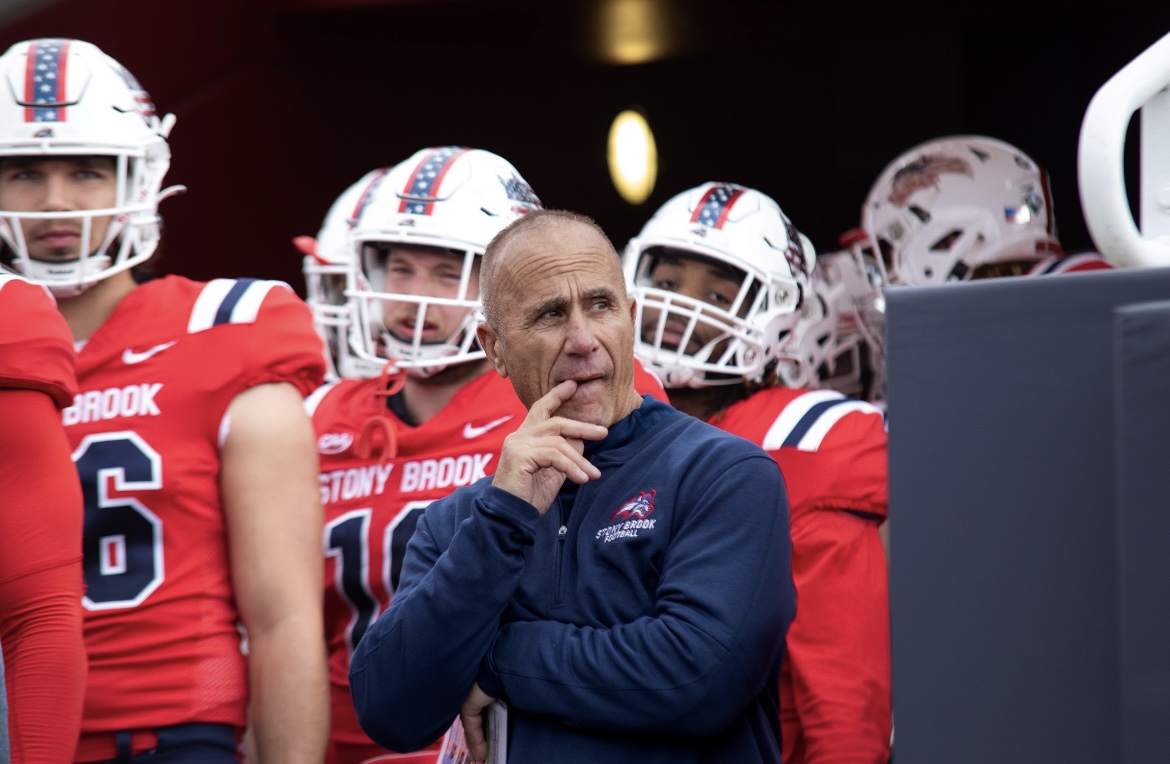
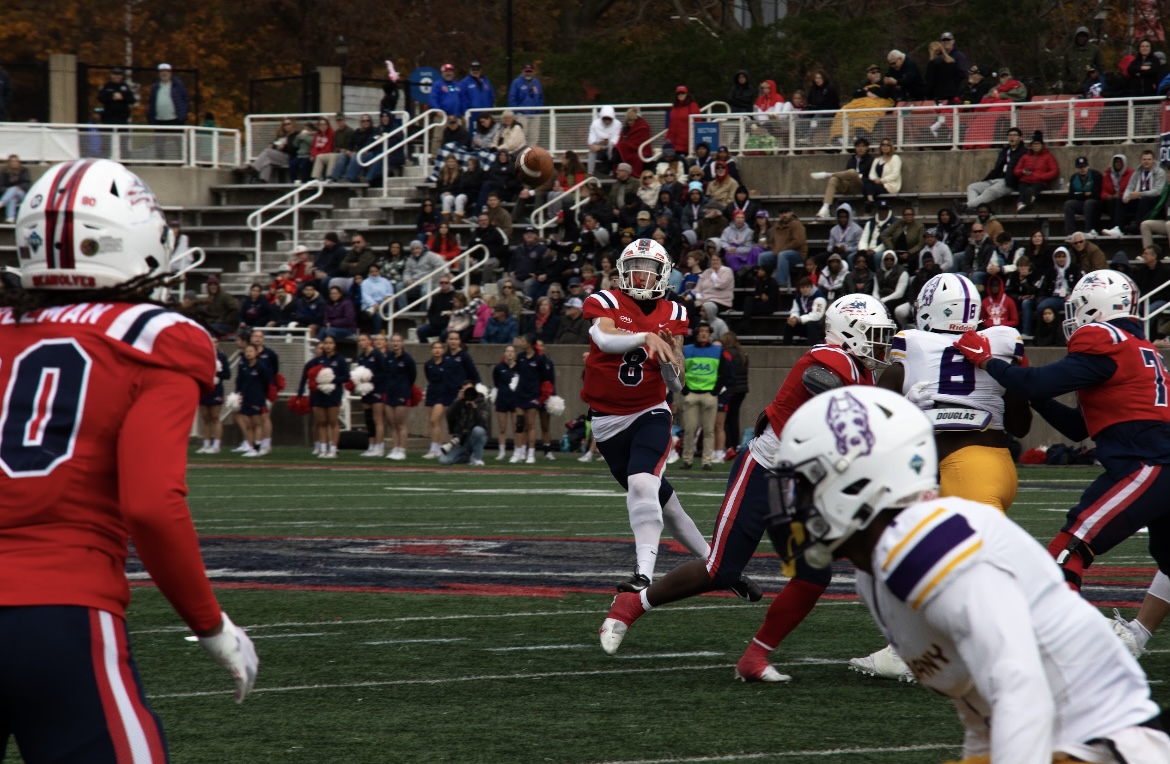
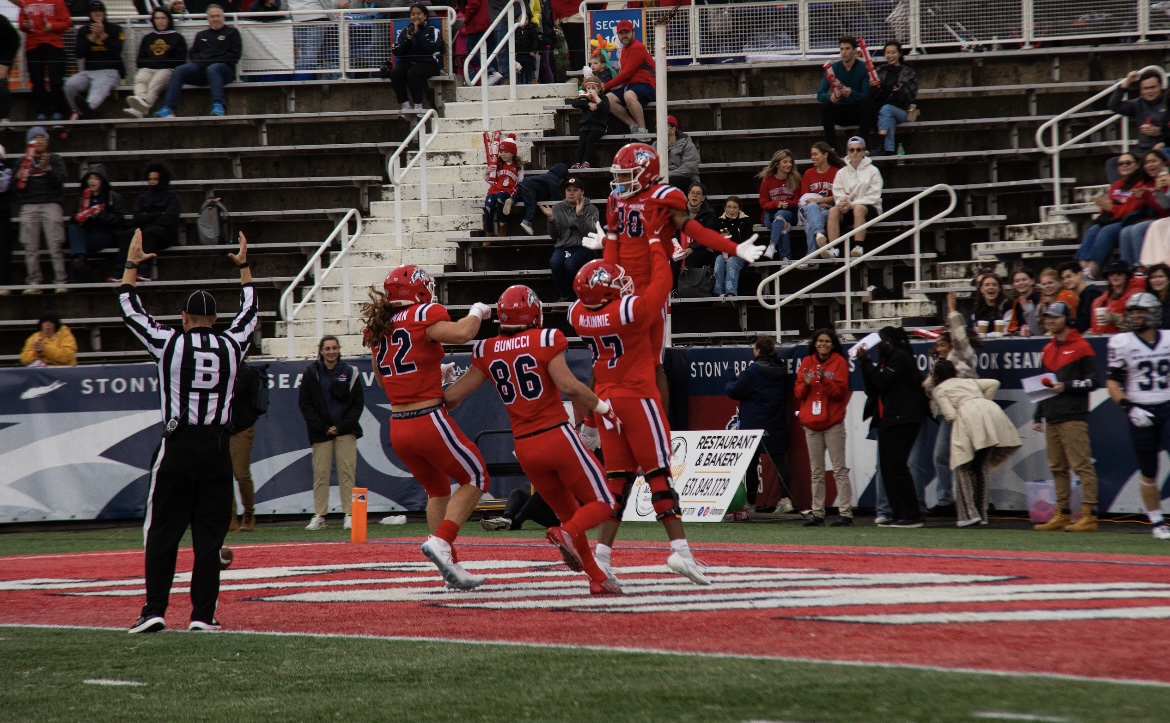
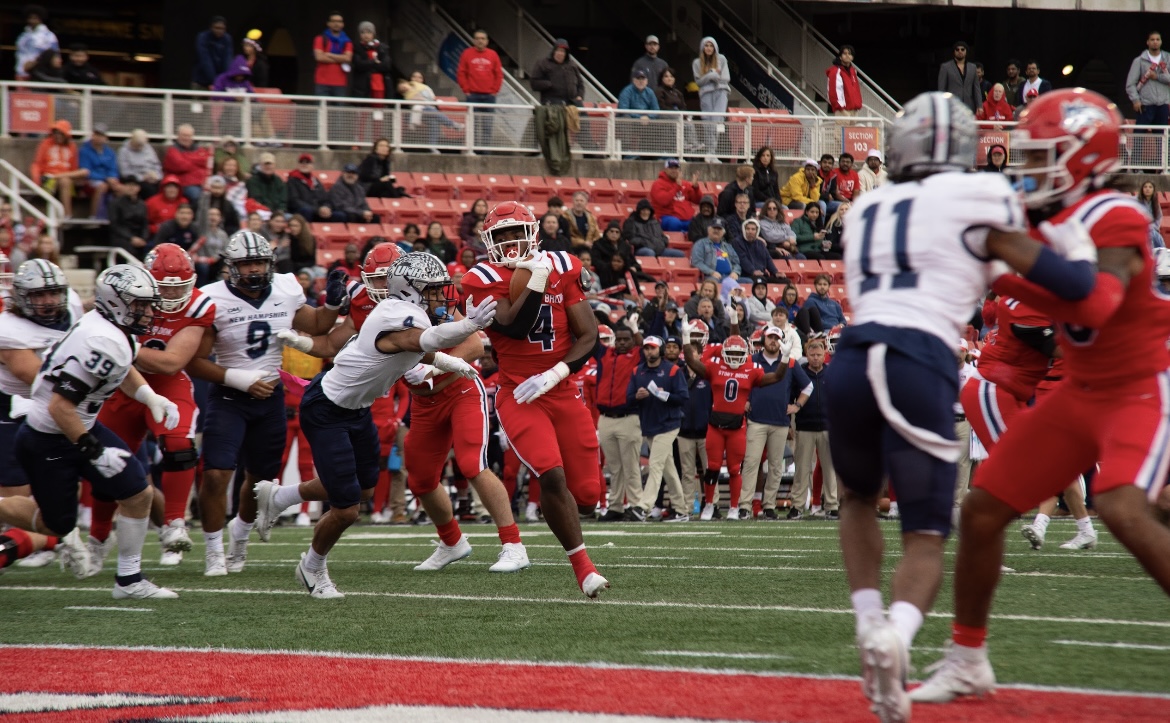
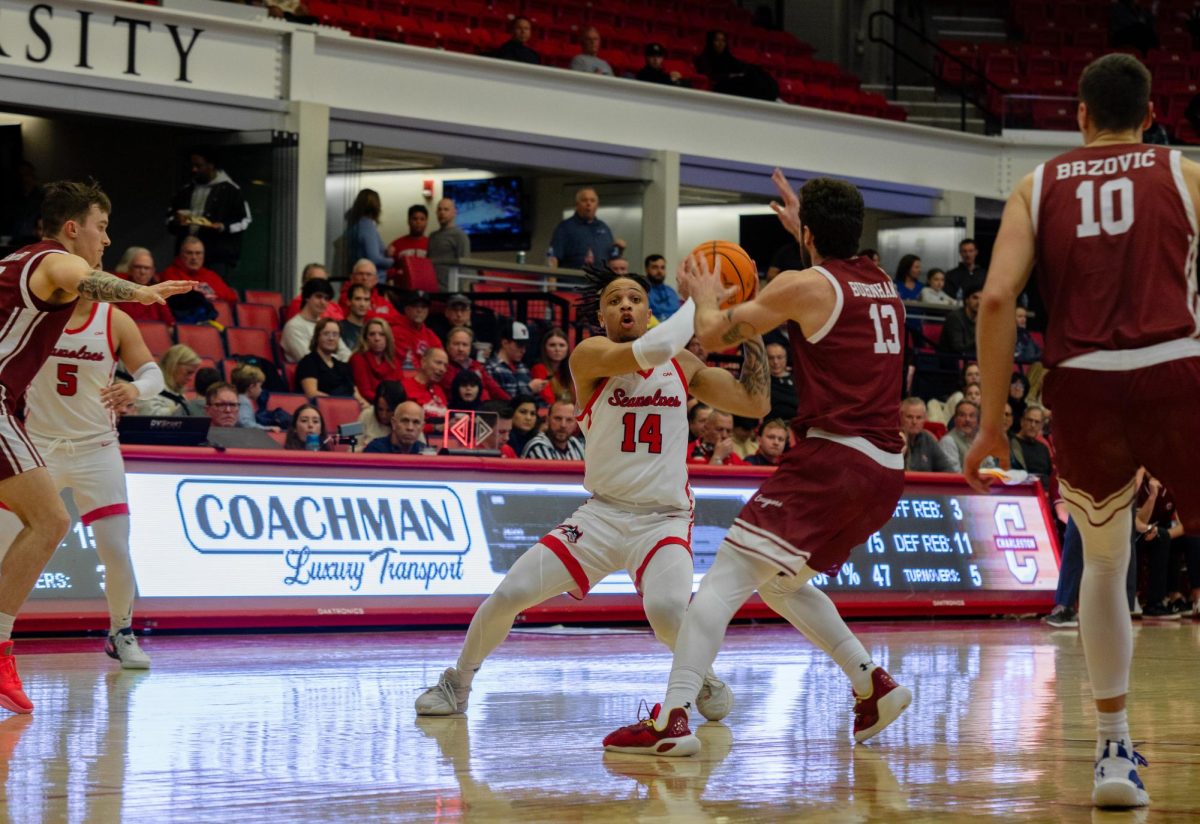
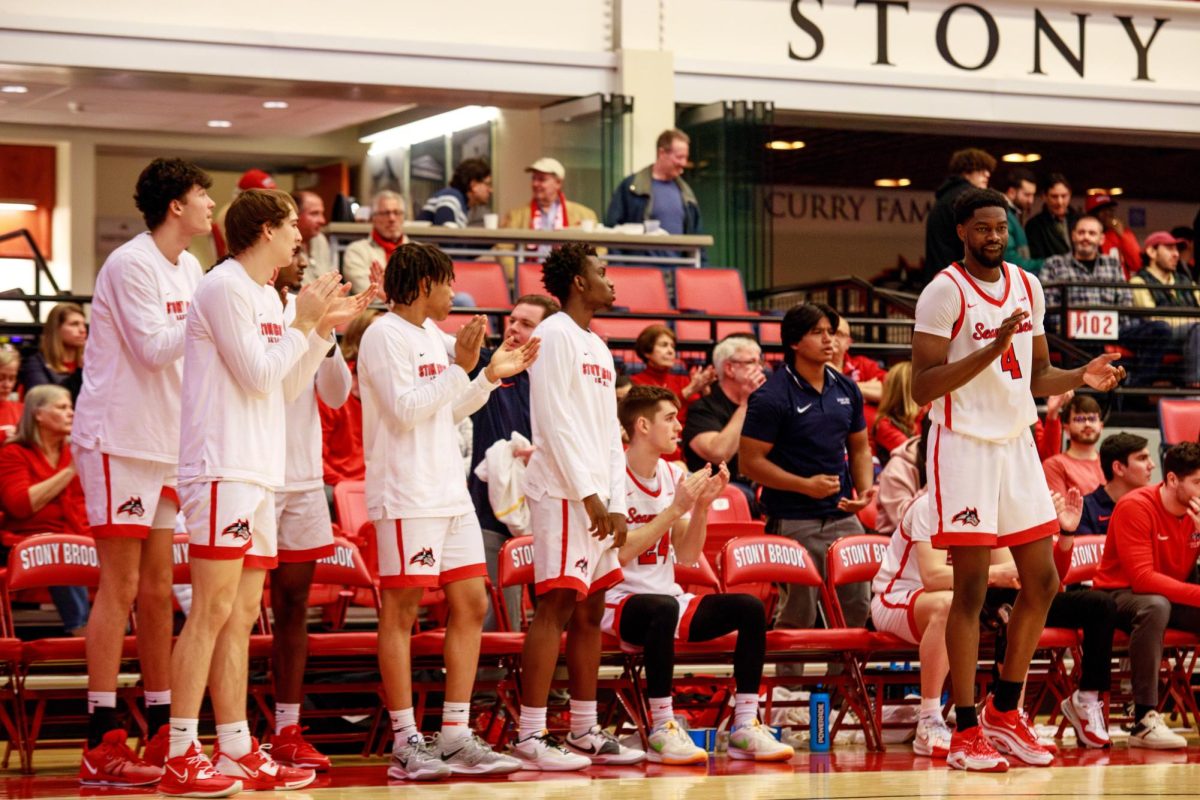
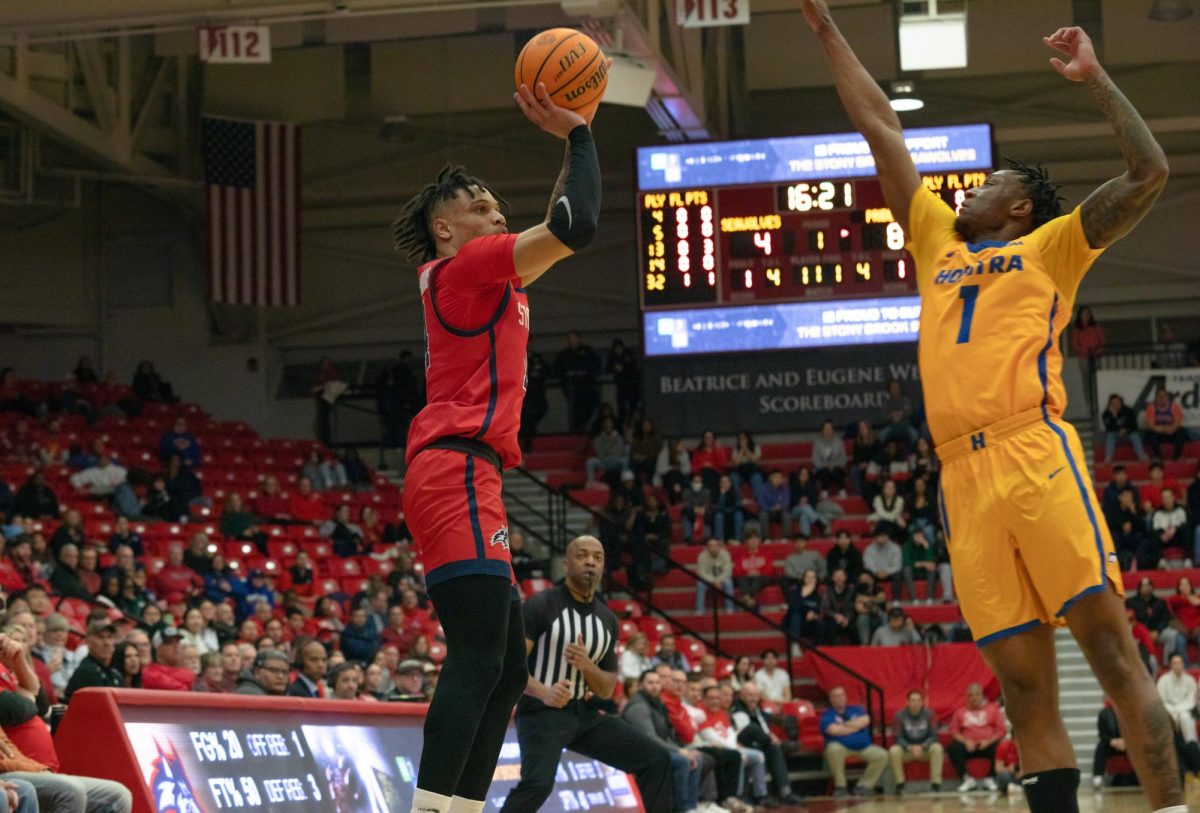
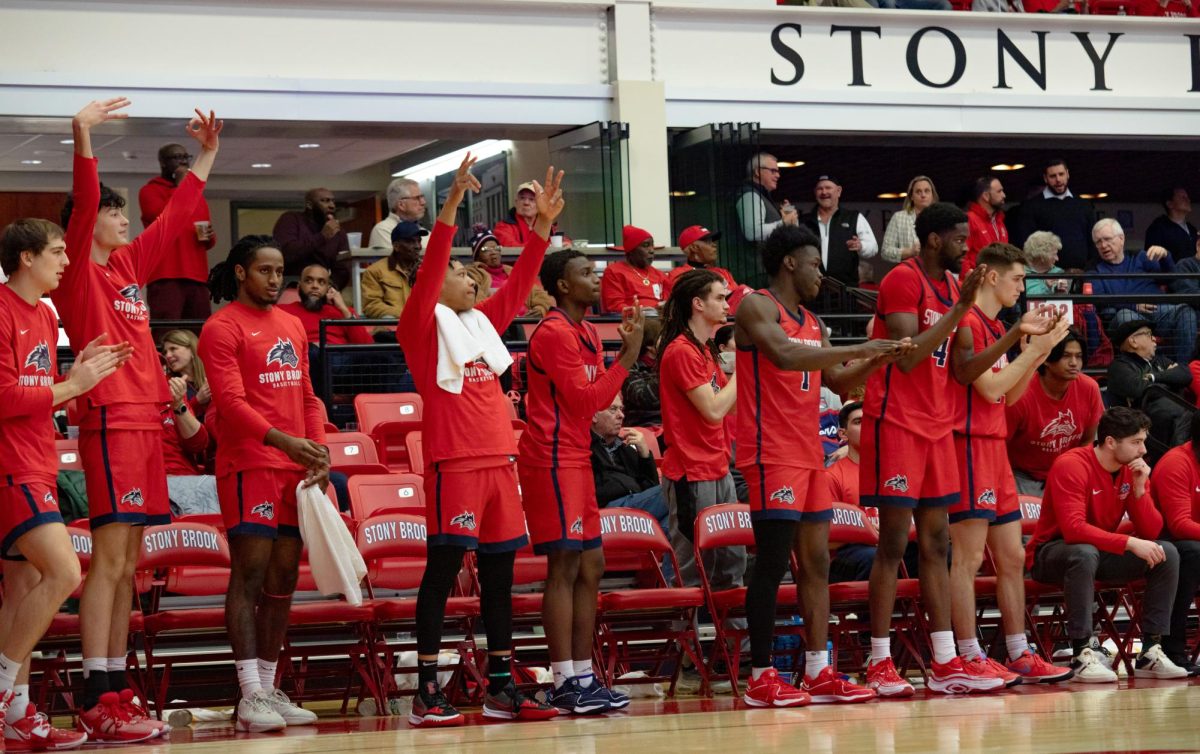
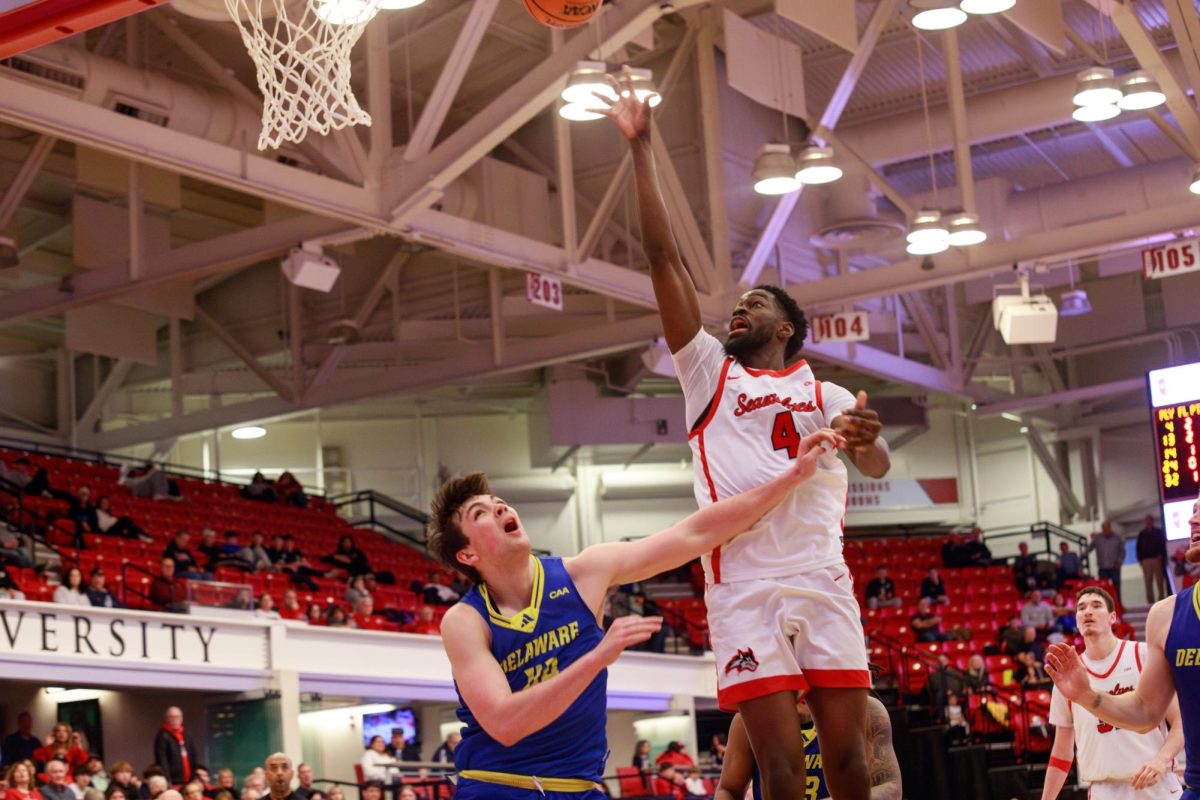
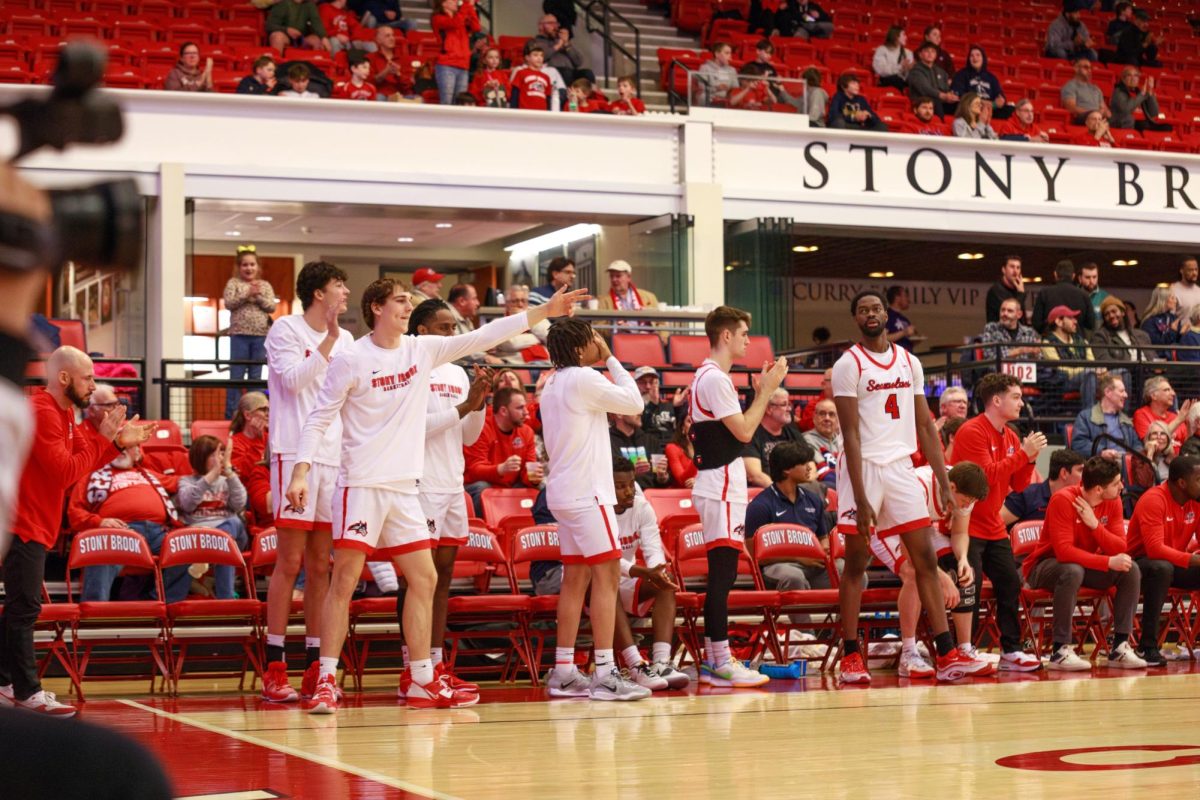
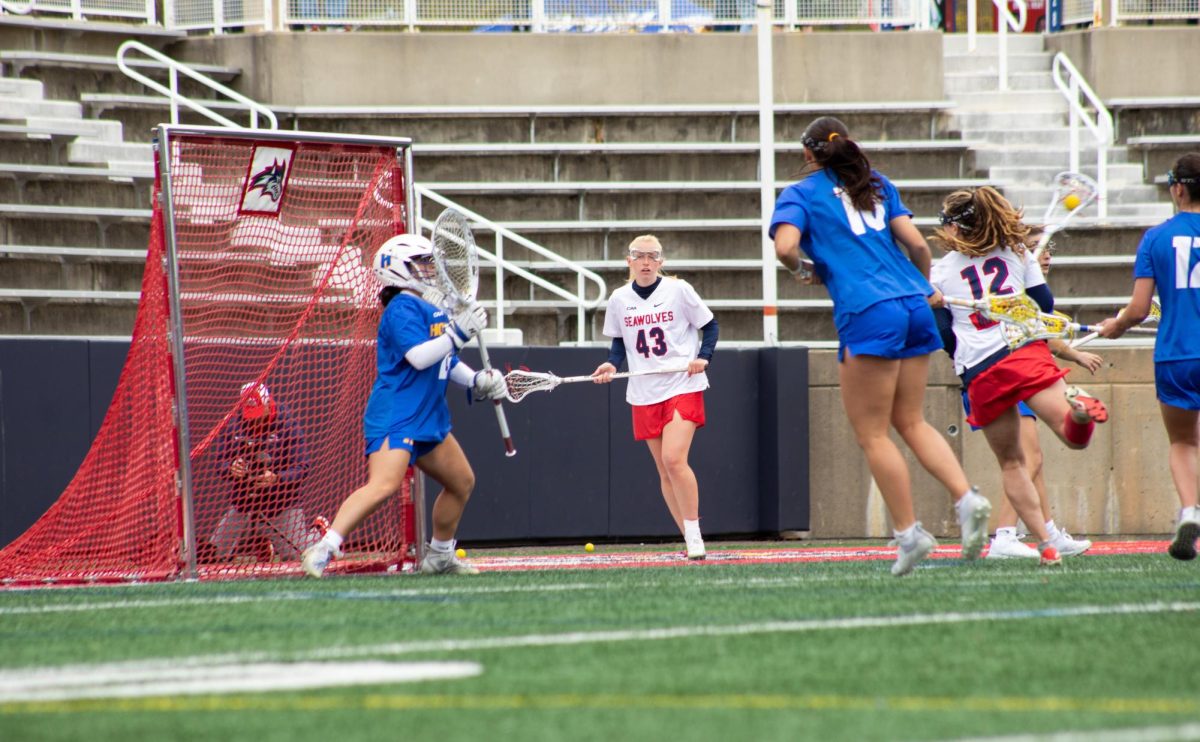
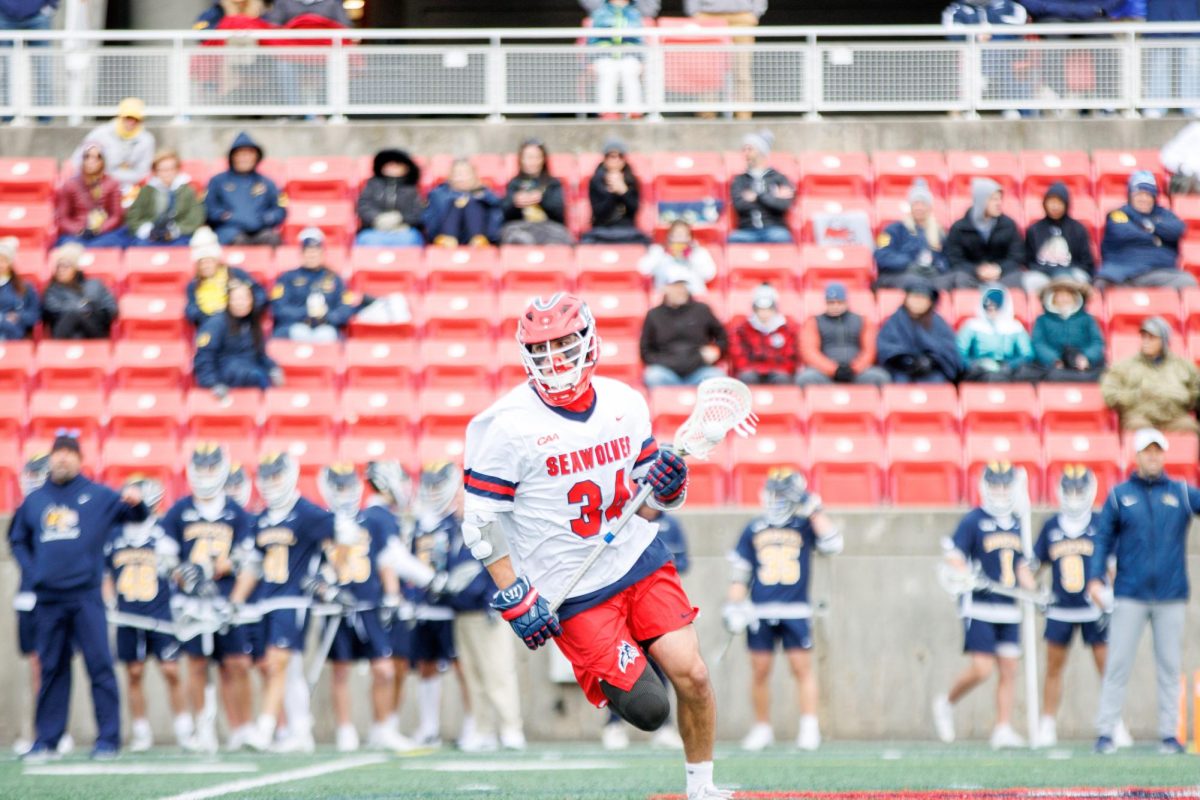
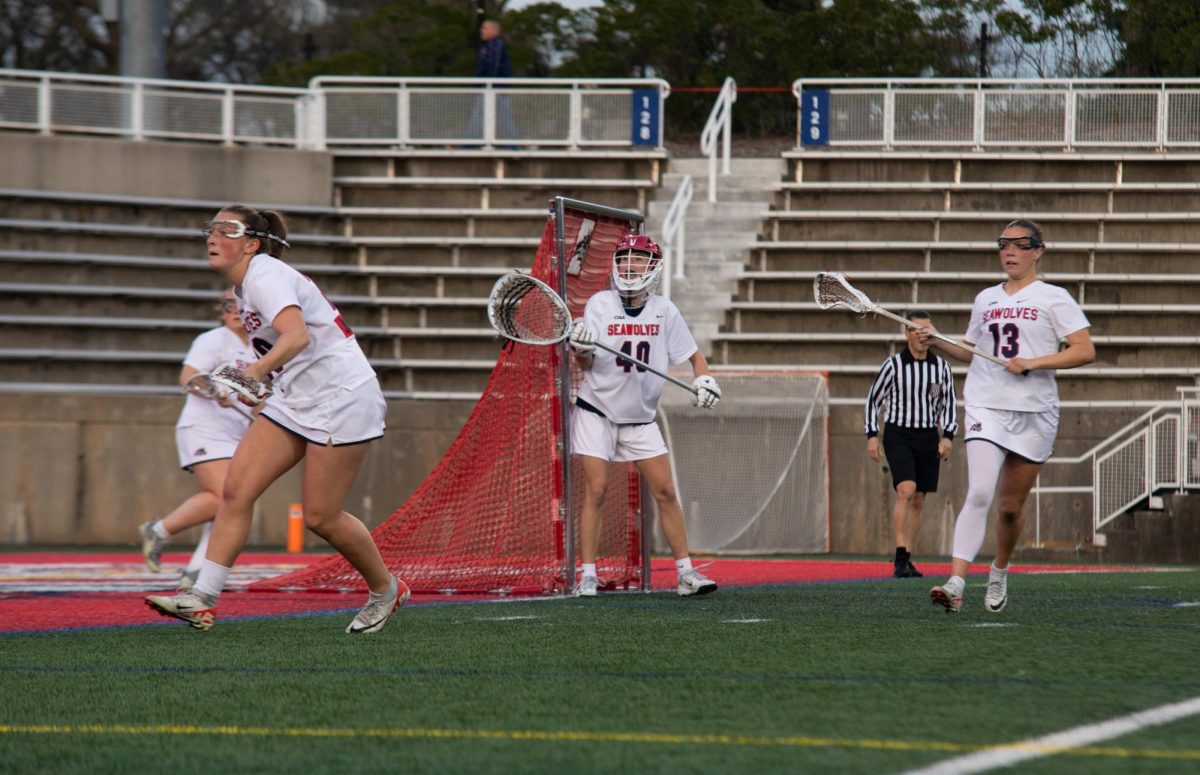
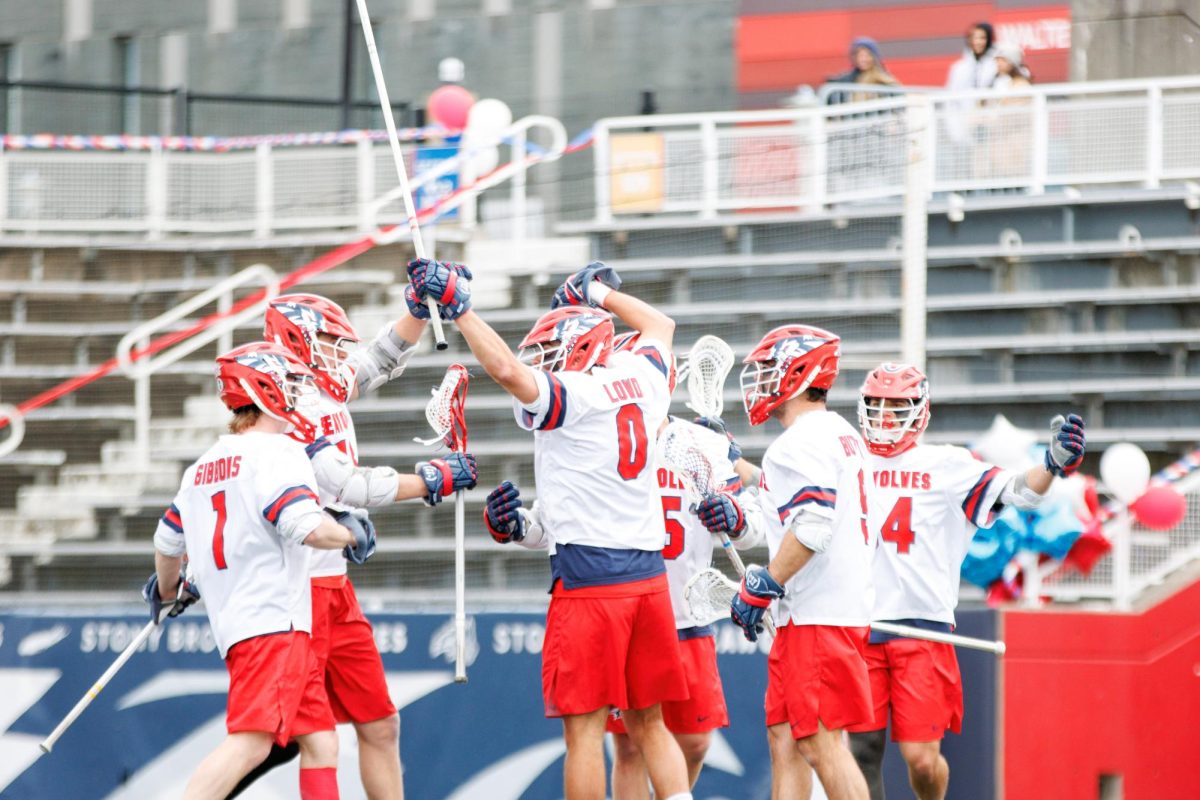
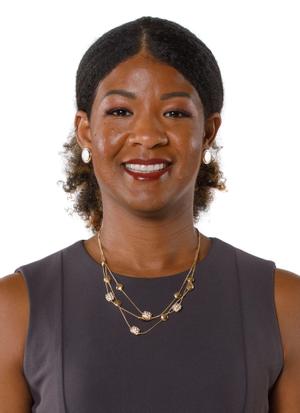

Sofa King • Apr 18, 2022 at 5:05 pm
Wow I agree with Rosemary Lin! There is no hype!
Ben Dover • Apr 17, 2022 at 8:05 pm
I disagree with Rosemary Lin, I love sports!
Kay Chin • Apr 10, 2022 at 1:51 am
Ridiculous. The writing of this article shows a clear disconnect with the student body of SBU. Most of us are under high academic pressure, and in the little free time we have, we might want to relax with our friends and family instead of watching a game. The trend is that fewer and fewer Americans are watching sports. Not to mention the high proportion of international students with even less exposure to American sports culture are not going to be interested. Instead of asking for a solution, we should ask: why is a disinterest in sports a problem in the first place? Prioritizing profits has been the number one reason school does not feel like a community but a business– and you expect us to buy into this?
Mike Hawk • Apr 5, 2022 at 12:35 am
We need more Steve Attaway’s in this world and less Rosemary Lins
Jim Harrison • Apr 4, 2022 at 8:15 pm
Over the past seven years, despite benefitting from having exceptional coaching and student-athlete talent, athletics administration, specifically the top two, have failed at raising anything close to the $100 million in five years, which was promised. They have also failed at growing the attendance with the programs. Not mentioned in your article is the success of many of the women’s programs, as well as other men’s sports. These amazingly-talented kids, with the help of their amazing coaches and training staffs have had significant success. Athletics staff below the top two administrators work hard as well, to promote and support the kids.
In the corporate world, if you are unable to meet your own goals, let alone those set by your organization, folks in those top-tier positions are moved out. It’s great to be a cheerleader if you’re one of the top two administrators, but, fans, financial supporters and season ticket holders (whose numbers have dwindled) want more.
I had some insight for a few years, photographing for Athletics. They are blessed with great coaches, staffs and kids, but the leadership, IMO, and based on the current state of affairs, seems to have hit a wall. Again, in the corporate world….